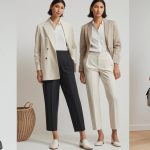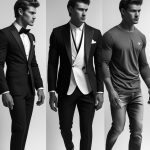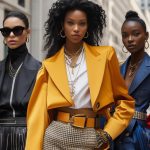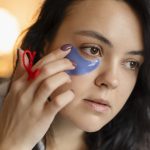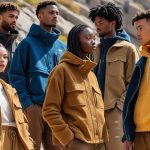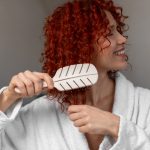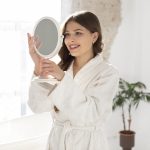At Circle Robe, we know that modern office dress codes are shifting away from rigid formality and embracing comfort with elegance. That’s where smart casual steps in the perfect balance between polished and relaxed, giving professionals the freedom to dress with personality without compromising on sophistication.
Smart casual is not about being underdressed; it’s about dressing with intent. Think tailored silhouettes, clean lines, and thoughtful layering. This approach to office wear reflects today’s evolving work culture where creativity, comfort, and style go hand in hand. Let’s break down how to master this adaptable dress code.
When to Wear Smart Casual
Smart casual fits well in settings like internal meetings, collaborative team projects, or days with client interaction that doesn’t require formal suits. It also works for office happy hours, creative pitches, or coffee chats with colleagues.
In a hybrid work environment, smart casual provides a comfortable middle ground that helps you transition easily between home and office. For job interviews at startups or modern firms, this style shows both readiness and personality without appearing overdressed.
What Not to Wear in Smart Casual
Smart casual isn’t permission to dress down completely. Avoid sporty items like gym wear, hoodies, or track pants. Similarly, distressed denim, flashy logos, and worn-out sneakers detract from a clean appearance.
Stick to structured garments and avoid shiny or wrinkled fabrics. Footwear should be closed, clean, and supportive flip-flops or slides don’t qualify. The essence of smart casual lies in combining comfort with intention and elegance.
Women’s Guide to Smart Casual Styling
Women have a wide range of stylish options. A good outfit often starts with tailored pieces like slim-fit trousers, midi skirts, or structured dresses. Tops can include classic blouses, knit tops, or button-down shirts.
Footwear such as loafers, ankle boots, or low heels work well. Accessories like a leather tote, minimal jewelry, or a silk scarf can elevate the look. Seasonal outerwear such as trench coats or longline blazers finish the outfit with sophistication. Opt for a neutral palette with occasional bold accents to reflect your style.
Men’s Smart Casual Essentials
Men should focus on clean and fitted staples. Chinos or dark, unembellished jeans are solid foundational pieces. Pair them with polo shirts, oxford shirts, or lightweight sweaters. Layer with an unstructured blazer, denim jacket, or a fine-knit cardigan.
Footwear like loafers, Chelsea boots, or polished sneakers maintains a refined edge. Avoid oversized items or busy graphics—smart casual demands subtlety and coordination. Neutral or muted tones offer versatility and polish.
Smart Casual vs. Business Casual: A Full Comparison
Expression & Flexibility:
Smart casual allows more personal style and creativity, while business casual follows a more traditional approach.
Clothing Style:
Business casual involves structured pieces like dress pants, pencil skirts, and button-down shirts. Smart casual includes modern silhouettes, relaxed tailoring, and trendier pieces.
Footwear & Accessories:
Smart casual welcomes clean sneakers and stylish accessories. Business casual sticks to leather shoes and minimal, conservative accessories.
Color & Texture:
Business casual leans on muted tones and simple textures. Smart casual embraces color pops, prints, and texture play when balanced well.
Workplace Fit:
Smart casual works best in creative or hybrid workplaces like tech or media. Business casual fits more formal environments like finance or law.
Overall Tone:
Smart casual is more relaxed but polished. Business casual is structured and consistent, with less room for trend-led choices.
Key Differences:
Dark denim, fashion-forward layers, and statement shoes define smart casual. Business casual favors neutral palettes, classic styles, and polished tailoring.
Cultural Adaptability:
Smart casual changes with style trends and workplace culture. Business casual remains rooted in long-standing professional standards.
FAQs
Can I wear jeans in a smart casual office?
Yes, but opt for clean, dark-wash denim without rips. Pair them with structured pieces like a blazer or knit top to maintain balance.
Are sneakers appropriate for smart casual?
They can be, as long as they are clean and minimal. Stick to leather or neutral-toned sneakers that look fresh and understated.
How do I dress smart casual in summer?
Choose breathable fabrics like linen or cotton. Think sleeveless blouses, cropped trousers, and loafers instead of heavy layers.
Is smart casual acceptable for job interviews?
At creative or modern companies, yes. Always research the company culture first, but a smart casual outfit can make a great impression.
What are smart casual colors to focus on?
Neutrals like navy, beige, black, and white work well. You can also mix in soft pastels or rich earth tones to keep the look lively yet professional.
Conclusion
Smart casual is more than a dress code it’s a mindset. At Circle Robe, we believe this style philosophy empowers professionals to feel confident and authentic in their daily wardrobe. By striking the perfect balance between formality and flair, you can navigate any office environment with style.
Understanding what works for your role, body, and workplace helps you make smart casual your own. Choose well-made pieces, experiment with layers, and let personal touches shine through. Whether you’re walking into a meeting or working remotely, your outfit should reflect both comfort and intention.



